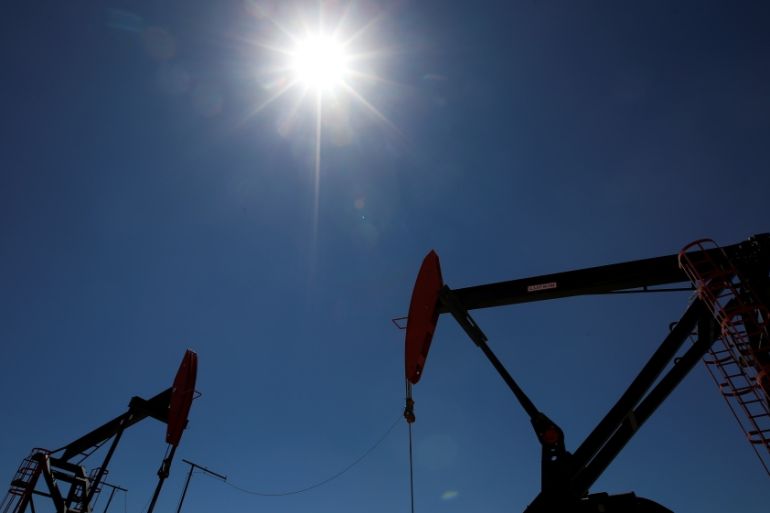Oil prices fall as producers keep pumping crude
OPEC production surged by the most in almost 30 years, a survey showed, while demand is not expected to recover soon

Oil prices declined on Monday after three days of gains as worries of a supply glut resurfaced on new data showing production levels were higher in April.
The Organization of Petroleum Exporting Countries (OPEC) saw production surge by the most in almost 30 years in April, a Bloomberg news agency survey showed, as countries kept pumping vast amounts of crude even after reaching a price-war truce earlier in the month.
Keep reading
list of 3 itemsCould the oil price crisis radically redefine US-Saudi relations?
US Markets fall: Dow drops more than 600 points
United States West Texas Intermediate (WTI) crude futures last sat at $18.59 per barrel, down 6 percent, while Brent futures were down 2.4 percent at $25.80.
In the previous week, oil prices rose as US stockpiles grew less than expected and cities moved to ease coronavirus lockdown measures, lending hope to a revival in oil demand.
But traders believe it is likely to take more than a year and perhaps longer for demand to return to pre-coronavirus levels. The enormous glut built up over the price war in March and April will also keep prices depressed even as economic activity picks up.
The May futures contract for US WTI plunged into negative territory in April for the first time ever due to fears that the country was running out of space to store oil.
Stocks also declined on Monday after the US released bleak economic data and fresh concerns of a trade war with China appeared.
In thin trade, with China and Japan on holiday, US stock futures fell 1.6 percent, US crude tumbled more than $1 a barrel, or 6 percent and futures for Australia’s benchmark ASX 200 index pointed to a negative open.
US manufacturing plunged to an 11-year low last month, consumer spending has collapsed and some 30.3 million Americans have filed claims for unemployment in the last six weeks.
Separately, US Secretary of State Mike Pompeo added to the jitters with remarks on Sunday, when he said there was “a significant amount of evidence” that the new coronavirus emerged from a Chinese laboratory.
Pompeo did not provide evidence, or dispute US intelligence agencies’ conclusion that the virus was not man-made. But the comments add momentum to Washington’s pressure on China over the virus’ origin as US deaths and economic damage mount.
“There is a sense of caution, if not foreboding as signs of economic weakness continue to emanate,” said Vishnu Varathan, head of economics and strategy at Mizuho Bank in Singapore.
“What’s really chilling is the risk that an almost quadrupling of unemployment to above 16 percent may prove sticky.”
The US April jobs report will be released on Friday but some analysts say it may not fully reflect how many people have been thrown out of work.
In Hong Kong, shares declined on Monday after a two-day holiday on the back of concerns that the city may be seeing its worst economic slump on record. The benchmark Hang Seng was down 3.5 percent.
Hong Kong’s authorities are preparing to ease some lockdown measures this week amid signs the coronavirus outbreak has been contained, but investors were jittery over a collapse in corporate earnings.
In currency markets, the safe-haven US dollar rallied to one-week highs against the risk sensitive Australian and New Zealand dollars.